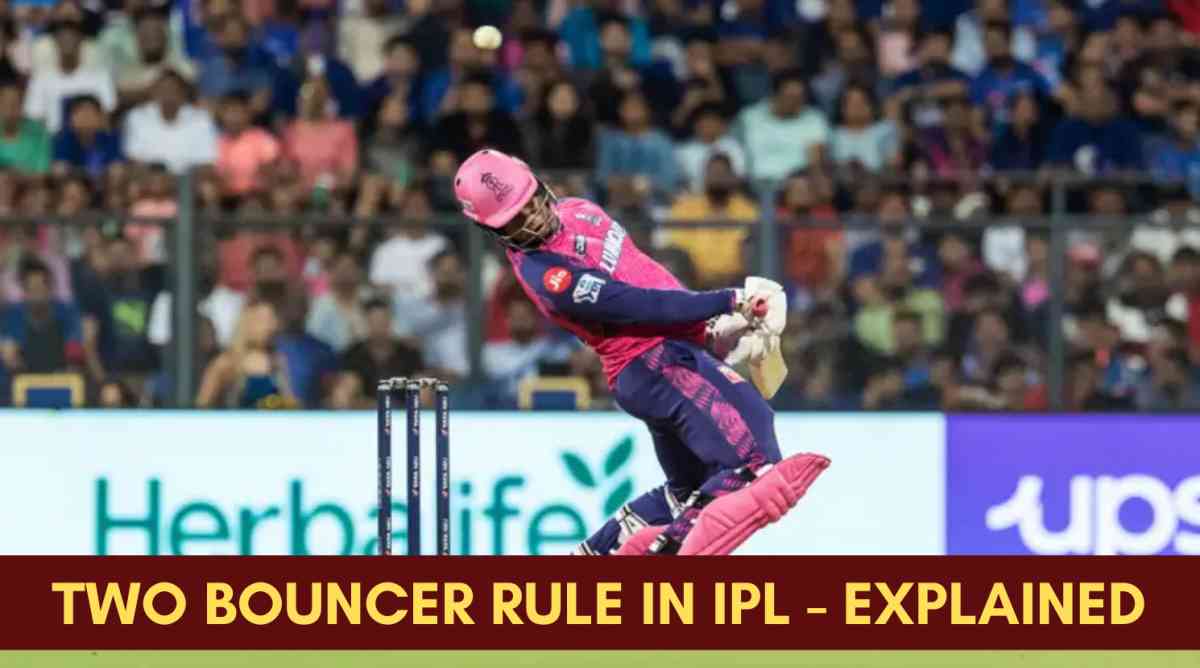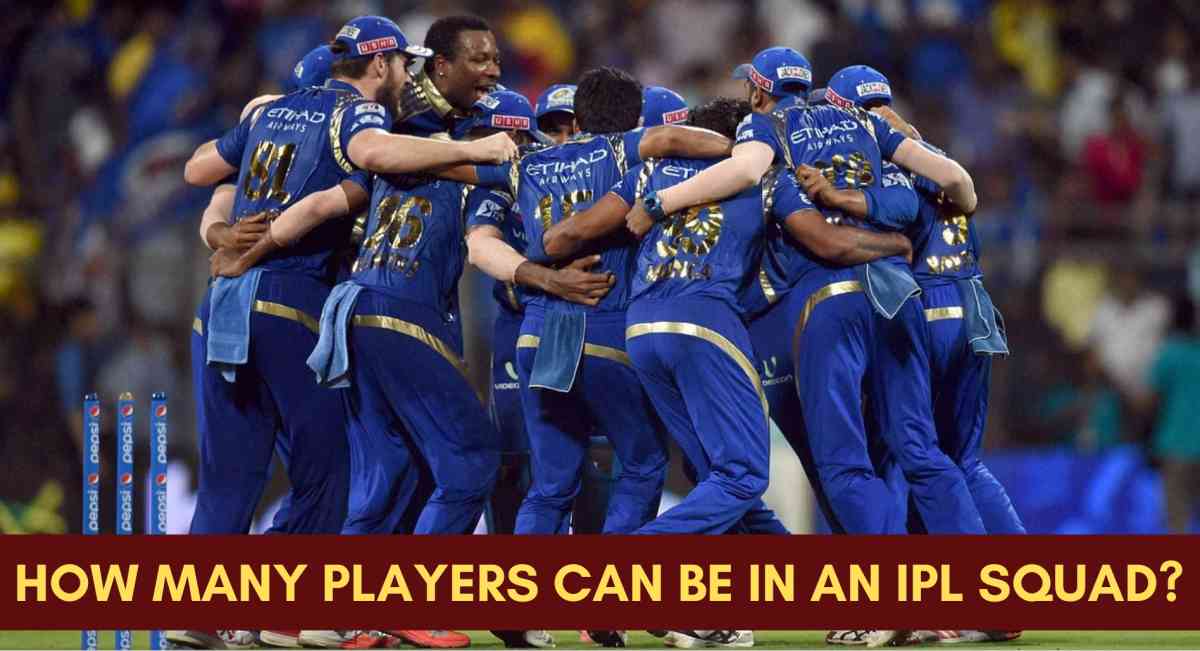IPL Specials
Two Bouncer Rule in IPL – Explained

The announcement regarding the playing conditions for the 2024 edition of the Indian Premier League (IPL) has stirred considerable interest and discussion among cricket enthusiasts. One of the most notable changes introduced is the allowance for bowlers to deliver two bouncers in a single over, marking a departure from the traditional limitation of one bouncer per over. This shift in regulation aims to inject a new dimension of excitement and strategy into the game, offering bowlers an expanded repertoire of tactics while simultaneously challenging batsmen to adapt to the increased level of aggression.
The decision to implement the “2 bouncer rule” follows a trial period during the domestic T20 tournament, the Syed Mushtaq Ali Trophy (SMAT), where the rule was experimented with to assess its impact and feasibility in professional cricket. The successful trial paved the way for its adoption in the IPL, with the Board of Control for Cricket in India (BCCI) confirming its inclusion in the playing conditions for the upcoming season.
Under the amended law 41.6, which governs the bowling of dangerous and unfair short-pitched deliveries, bowlers are now permitted to deliver a maximum of two fast short-pitched deliveries, commonly known as bouncers, per over. A fast short-pitched delivery is defined as a ball that passes above the shoulders of the batsman, emphasizing the potential danger and challenge it poses to the batting side.
Effects of the Two Bouncer Rule
The introduction of the two-bouncer rule in IPL 2024 is poised to significantly impact the dynamics of the game, altering the strategies of both bowlers and batsmen alike. This rule, allowing bowlers to deliver two bouncers per over, introduces a new level of unpredictability and challenges for batsmen, particularly in the fast-paced T20 format.
Challenge for batters
One of the immediate effects of this rule is the increased pressure on batsmen to handle short-pitched deliveries effectively. Batsmen, both domestic and international, will face heightened scrutiny against quick bowlers, especially those with pace and accuracy. The need to counter short balls effectively becomes paramount, as failure to do so could result in wickets falling or valuable runs being conceded.
More options to bowlers
Additionally, the rule adds a layer of complexity to the bowler’s arsenal. With the option to deliver two bouncers in an over, bowlers can now keep batsmen guessing and disrupt their rhythm more effectively. This puts batsmen under constant pressure to anticipate the next delivery, making shot selection and footwork crucial factors in their approach.
Furthermore, the rule impacts traditional strategies employed by bowlers at different stages of the game, particularly in the death overs. Bowlers, especially those known for their yorkers, now have the opportunity to mix up their lengths and keep batsmen guessing. The yorker, a staple delivery in the latter stages of T20 matches, may no longer be the default option, as bowlers may opt for well-timed bouncers to catch batsmen off guard.
However, the two-bouncer rule also carries its own risks and challenges. Batsmen, given their ability to adapt and innovate, may find ways to counter the increased bouncer threat. Additionally, miscued shots or edges off bouncers could lead to boundaries or even sixes, highlighting the double-edged nature of this tactic.
Two Bouncer Rule Law Explained in Detail
The two laws, outlined within clause 41.6 of cricket’s playing regulations, specifically address the bowling of fast short-pitched deliveries, commonly referred to as bouncers, and their limitations within a single over.
1. Clause 41.6.1.4:
The Law Statement: “A bowler shall be limited to two fast short-pitched delivery per over.”
- This clause stipulates that a bowler is restricted to delivering a maximum of two fast short-pitched deliveries, or bouncers, per over. In cricket terminology, a bouncer is a delivery that has a high trajectory and passes above the shoulders of the batsman, making it potentially dangerous and challenging to play.
- By imposing this limitation, the law aims to balance the contest between bat and ball, preventing bowlers from excessively targeting batsmen with intimidating deliveries while still allowing them to utilize bouncers strategically as a part of their bowling arsenal.
2. Clause 41.6.1.7.1:
The Law Statement: ““For the avoidance of doubt any fast short-pitched delivery that is called a wide under this clause shall also count as one of the allowable short-pitched deliveries in that over.”
- This clause addresses the scenario where a fast short-pitched delivery, or bouncer, is bowled but is deemed too high and is called as a wide by the umpire. A wide in cricket refers to a delivery that is outside the batsman’s reach and is not deemed playable, resulting in an extra run being awarded to the batting side.
- According to this clause, if a bouncer is called as a wide, it still counts towards the bowler’s limit of two allowable bouncers for that over. In other words, if a bowler bowls a bouncer that is called as a wide, it will be considered as one of the two fast short-pitched deliveries allowed for that over, thereby reducing the bowler’s remaining quota of bouncers for that particular over.
- This provision ensures that bowlers cannot circumvent the limitation on bouncers by deliberately bowling deliveries that are too high and subsequently called as wides, maintaining the integrity of the rule and preventing any potential exploitation of the regulation.
Together, these two laws serve to regulate the frequency and nature of bouncers bowled by the fast bowlers, promoting a fair and balanced contest between bat and ball while prioritizing player safety on the cricket field.
Two Bouncer Rule FAQs
1. What is the new rule introduced in IPL 2024 regarding bouncers?
IPL 2024 has introduced a new rule allowing two bouncers per over, which is expected to have significant implications on the game. This change aims to make the competition more dynamic and challenging for both batsmen and bowlers.
2. How might the two-bouncer rule impact the gameplay in IPL 2024?
The introduction of two bouncers per over is likely to test batsmen’s skills against short-pitched deliveries and make it more challenging for them to predict the bowler’s next move. Additionally, it could lead to more varied strategies from bowlers and require batsmen to adapt quickly during their innings.
3. Has the two-bouncer rule been tested in any other cricket tournaments prior to IPL 2024?
Yes, the Board of Control for Cricket in India (BCCI) experimented with the two-bouncer rule during the Syed Mushtaq Ali Trophy earlier in the year. The feedback from this trial was largely positive, leading to its implementation in IPL 2024.
4. What are some potential advantages and risks associated with the two-bouncer rule in IPL 2024?
The two-bouncer rule presents opportunities for bowlers to keep some of the best batsmen guessing and vary their tactics throughout an over. However, it also poses risks, such as the potential for boundaries off miscued shots and the need for bowlers to use the deliveries strategically to avoid predictability.
-

 Schedule9 months ago
Schedule9 months agoPakistan Men’s Cricket Team Home & Away Full Schedule for 2024-25 Season
-

 Cricket Listicles10 months ago
Cricket Listicles10 months agoTen Best Openers in T20 Cricket World
-

 IPL Specials11 months ago
IPL Specials11 months agoThe Five Best Finishers in IPL History
-

 Schedule6 months ago
Schedule6 months agoUpcoming ICC Tournaments from 2025 to 2031
-

 T20 World Cup9 months ago
T20 World Cup9 months agoTop 5: Most Runs in T20 World Cup
-

 IPL Specials11 months ago
IPL Specials11 months agoHow many players can be in an IPL squad?
-

 Cricket Listicles8 months ago
Cricket Listicles8 months agoTop 5: Virat Kohli’s Highest Scores in Test Cricket
-

 T20 World Cup9 months ago
T20 World Cup9 months agoTop 5: Most Wins by a Team in T20 World Cup History










